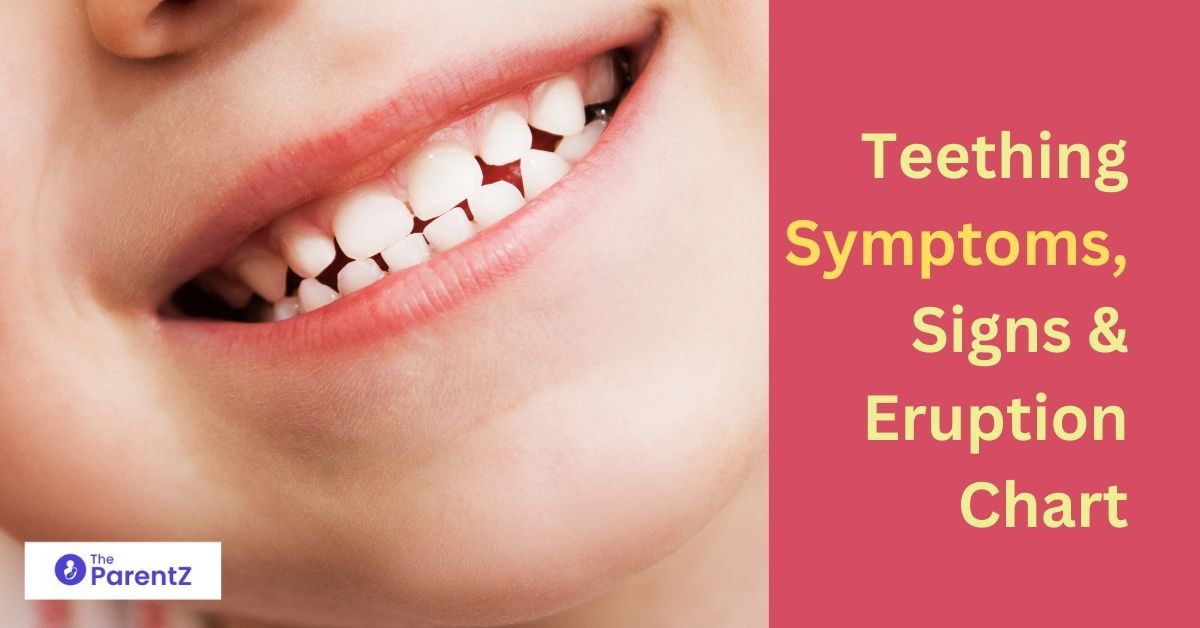We often come across terms like pearly whites, 32 pearls while we flip through dental advertisements in magazines or newspapers. Well, this numerical 32 indicates the number of teeth an adult has in his/her mouth! What about children? Does a child have as many as 32 teeth or they have a little less?
Yes, children have a completely different set of teeth namely milk teeth which are 20 in number.
When do Babies start teething?
The first one to erupt are the lower front teeth starting at the age of 6-8 months and the last ones are the second molars which are seen between the ages of 20-30 months.
Number of teeth in children
Children have 10 teeth each in the upper arch and 10 teeth each in the lower arch.
Starting with a set of two incisors in the front namely central incisor and lateral incisor followed by a single canine and set of 2 molars at the end known as first molars and second molars on both sides, right and left.
The sequence of eruption of milk teeth
A child might get his first tooth as early as 6months or it might not even erupt by the age of 1. Ideally, the front incisors namely central incisors in the lower arch are the first ones to erupt by the age of 6-8 months, followed by upper central incisors and later lateral incisors in both the arches are appreciated by the age of 8-11 months. Canines are seen by the age of 16- 20 months. First molars erupt by the age of 11-18 months followed by second molars which are seen by the age of 20-30 months. By the age of 3 years, a child has all primary teeth in his/her oral cavity.
- 6-8 months : Central Incisors
- 8-11 months: Upper Central Incisors and Lateral Incisors
- 16-20 months: Canines
- 11-18 months: First molars erupt
- 20-30 months: second morlars
Things to consider
Not all kids are the same and, neither their teeth as well. A slight delay in eruption of first teeth should not be worrisome for parents until the age of 12 months. Similarly, if a child doesn’t get his/ her first teeth by the age of 18 months medical intervention might be needed.
There is also something known as natal teeth and neonatal teeth which is a rare phenomenon seen in infants. Natal teeth are the teeth which are present in the infant’s oral cavity at the time of birth. Whereas neonatal teeth are those which erupt during the first month of the infant’s life. In the best interest of the infant, it is recommended to get rid of such teeth which might pose a risk of aspiration if at times mobile or loosely held in the infants oral cavity. Such teeth might also hinder the feeding activity of the infant.
A pediatric dentist is recommended to perform the extraction procedure of a natal or neonatal tooth in an infant after assessing the risk factors and necessary investigations associated with the same.
Teething Symptoms, Signs and Problems
Problems associated with teething
- Soreness of gums around the erupting teeth
- Excess saliva in mouth and drooling
- Cranky behaviour in infants
- Loose motions or diarrhoea
- Aversion to certain foods or feeding altogether.
How to cope up with teething symptoms
- Teething rings with frozen solids or frozen wet washcloth relieve discomfort.
- Massaging the sore gums help in relieving pain.
- Intake of water is a must to prevent dehydration.
Avoid over the counter medicines or numbing gels available for teething to prevent potential side effects of such drugs. Teething rings with liquids should not be used ideally to prevent consumption of liquid by the infant in case of leaks. Foods for teething like teething sticks are to be best avoided to prevent a choking hazard. A slight hike in temperature is noted in some children but if it exceeds beyond 100°F it is best to visit your paediatrician to rule out other causes. Teething usually doesn’t fever a fever.
Why delayed eruption is observed in some children?
Delayed eruption has numerous causes. Genes are a predisposing factor contributing to delayed eruption. Natal or neonatal teeth also cause disturbances in the normal eruption sequence. At times there is the presence of fibrous bands or tissues in infants gums which deviate the path of or cause a delayed eruption in kids. A rare entity is anodontia that is the complete absence of teeth; in such a condition the child exhibits an absence of tooth buds altogether. This issue can only be analysed by radiographic investigations.
Any major trauma to the child’s face can also cause a delayed eruption of teeth.
All in all, every child is special in its own way and so are their teeth eruption patterns. Research says even identical twins do not follow the same sequence of teeth eruption. So to all parents who worry about their kid’s teeth and it’s an eruption, just relax!
These points sum up everything about kids teeth and ways to cope up with teething troubles.
Happy parenting!








Be the first one to comment on this story.